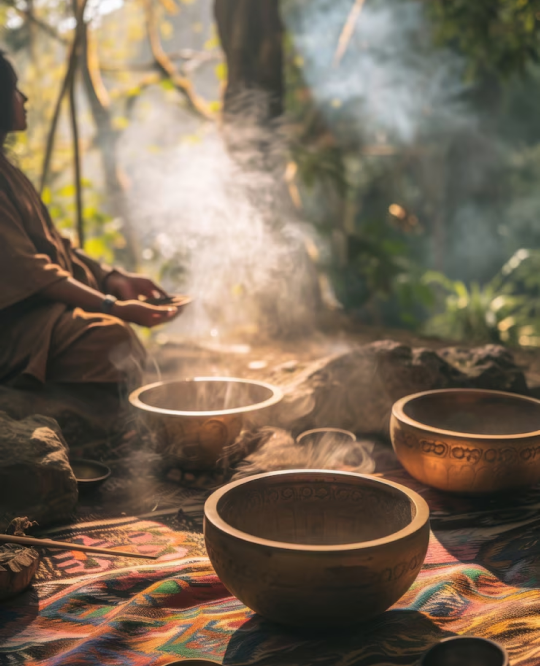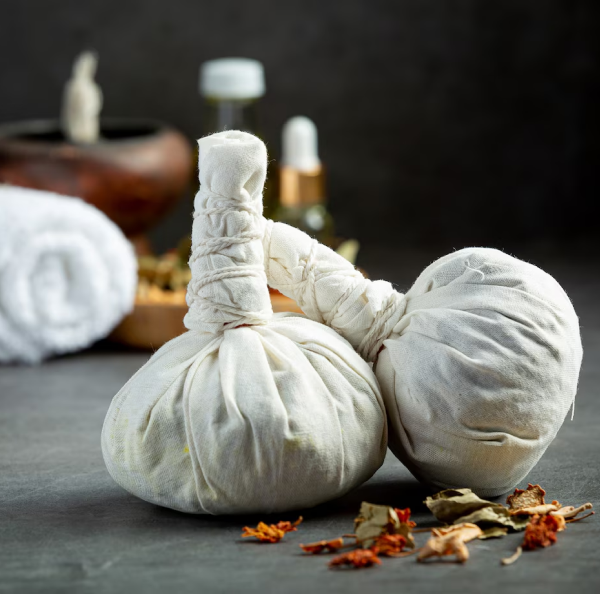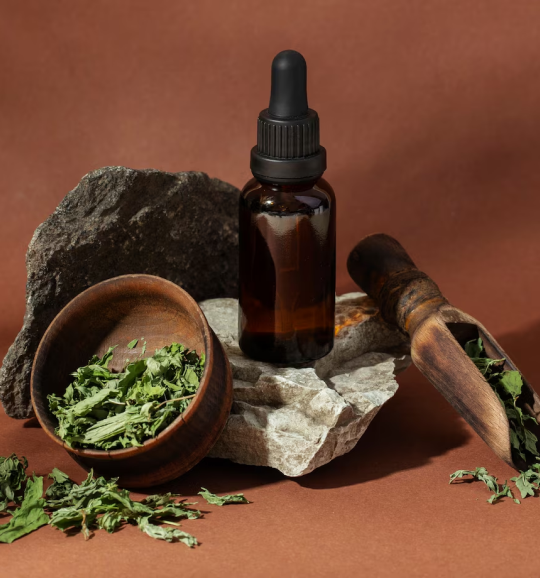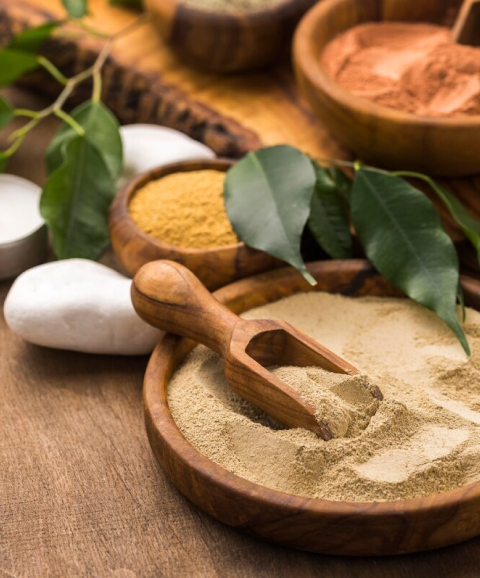_ Exploring Ayurveda's Potential 2.png)
Introduction
Avascular Necrosis (AVN), also known as osteonecrosis, is a painful condition caused by the loss of blood supply to bone tissue, leading to the death of bone cells and the eventual collapse of the affected bone. Commonly affecting the hip, knees, shoulders, and other joints, AVN can severely impact mobility and quality of life. Conventional treatments often include medications, surgery, and, in severe cases, joint replacement. However, Ayurveda, the ancient system of holistic medicine from India, offers natural approaches that may help manage AVN symptoms, improve joint health, and potentially slow the progression of the disease.
Understanding Avascular Necrosis (AVN)
_ Exploring Ayurveda's Potential 3.png)
What is AVN?
AVN occurs when the blood supply to a bone is disrupted, causing the bone tissue to die. Over time, this can lead to the collapse of the bone structure, particularly in weight-bearing joints like the hip. The exact cause of AVN isn’t always clear, but it can be associated with trauma, long-term use of corticosteroids, excessive alcohol consumption, and certain medical conditions like sickle cell disease.
Symptoms of AVN
The early stages of AVN may be asymptomatic, but as the condition progresses, symptoms often include:
- Joint pain that worsens with weight-bearing activities
- Limited range of motion in the affected joint
- Pain at rest or during the night
- Swelling and stiffness in the joint
If left untreated, AVN can lead to severe joint pain and disability, making early intervention crucial.
Ayurveda's Perspective on AVN
_ Exploring Ayurveda's Potential 4.png)
Ayurvedic View of Bone Health
In Ayurveda, bones (Asthi Dhatu) are considered one of the seven fundamental tissues that sustain the body. The health of the bones is closely linked to the balance of the doshas—Vata, Pitta, and Kapha. An imbalance in Vata dosha, which governs movement and dryness, is often associated with bone-related issues such as AVN. When Vata is aggravated, it can lead to the degeneration of bone tissue, poor blood circulation, and increased pain and stiffness in the joints.
Root Causes According to Ayurveda
Ayurveda identifies several factors that may contribute to the development of AVN, including:
- Imbalanced Doshas: Particularly an aggravated Vata dosha, which can dry out and weaken bone tissue.
- Poor Digestion (Agni): Impaired digestion can lead to the accumulation of toxins (Ama) in the body, which may settle in the joints and bones, disrupting normal function.
- Lifestyle Factors: Inadequate nutrition, lack of physical activity, and excessive consumption of alcohol or corticosteroids can further aggravate doshas and contribute to bone degeneration.
Ayurvedic Approaches to Managing AVN
_ Exploring Ayurveda's Potential 5.png)
Dietary Recommendations for Bone Health
A balanced diet that nourishes the bones and pacifies Vata dosha is essential in managing AVN. Ayurvedic dietary guidelines for bone health include:
- Calcium-Rich Foods: Incorporate foods like sesame seeds, almonds, and leafy greens to support bone density.
- Healthy Fats: Include ghee, olive oil, and avocados to provide lubrication to the joints and maintain Vata balance.
- Anti-Inflammatory Spices: Turmeric, ginger, and black pepper help reduce inflammation and improve circulation.
Avoid foods that aggravate Vata, such as cold, dry, and processed foods, as they can worsen bone health.
Herbal Remedies for AVN
Ayurveda offers a range of herbal remedies that may help manage AVN by supporting bone health, improving circulation, and reducing inflammation. Some key herbs include:
- Ashwagandha: Known for its rejuvenating properties, Ashwagandha helps strengthen bones, reduce inflammation, and improve overall vitality.
- Guggulu: This resin is commonly used in Ayurvedic formulations for bone and joint health. It helps reduce inflammation, improve circulation, and support the regeneration of bone tissue.
- Shatavari: Rich in calcium and other nutrients, Shatavari supports bone health and helps maintain hormonal balance, which can be beneficial in managing AVN.
Panchakarma: Detoxification and Rejuvenation
Panchakarma, Ayurveda’s comprehensive detoxification therapy, is particularly beneficial for managing AVN. It involves a series of treatments designed to remove toxins (Ama), balance the doshas, and rejuvenate the tissues. Key Panchakarma therapies for AVN include:
- Abhyanga (Oil Massage): Using medicated oils to massage the body helps improve circulation, reduce Vata dosha, and nourish the bones.
- Basti (Medicated Enema): Basti is one of the most effective treatments for balancing Vata dosha. It helps eliminate toxins from the colon, which in turn supports overall bone and joint health.
- Snehana (Oleation Therapy): Involves internal and external application of oils to lubricate the joints and tissues, making them more flexible and less prone to degeneration.
Yoga and Pranayama for AVN
Gentle yoga poses and breathing exercises (Pranayama) can support bone health by improving flexibility, reducing stress, and enhancing circulation. Specific practices for managing AVN include:
- Vrikshasana (Tree Pose): Helps improve balance and strengthen the bones.
- Setu Bandhasana (Bridge Pose): Strengthens the spine and hip joints, which are often affected by AVN.
- Anulom Vilom (Alternate Nostril Breathing): Balances the doshas and reduces stress, which can exacerbate bone and joint conditions.
Lifestyle Modifications
Making certain lifestyle changes can significantly impact the management of AVN. Ayurveda recommends:
- Regular Exercise: Engage in low-impact activities like swimming or walking to keep the joints flexible without putting too much strain on them.
- Stress Management: Practice meditation and mindfulness to reduce stress, which can aggravate Vata dosha and worsen symptoms.
- Adequate Sleep: Ensure you get sufficient rest, as sleep is crucial for the body’s natural healing processes.
Integrating Ayurveda with Conventional Treatments
_ Exploring Ayurveda's Potential 6.png)
Complementary Approaches
While Ayurveda offers a natural approach to managing AVN, it can be effectively integrated with conventional treatments. For example, Ayurvedic therapies can be used alongside medications to reduce side effects and support overall health. However, it’s essential to consult with both your Ayurvedic practitioner and conventional healthcare provider to ensure that the treatments complement each other without causing adverse effects.
Monitoring Progress
Regular monitoring of your condition is important when managing AVN, especially if you’re integrating Ayurvedic treatments with conventional care. Keep track of your symptoms, and communicate any changes to your healthcare providers. This will help in adjusting your treatment plan as needed to ensure the best possible outcome.
Conclusion
Avascular Necrosis (AVN) is a challenging condition that requires a comprehensive approach to treatment. Ayurveda offers a natural and holistic way to manage AVN by addressing the root causes, improving bone health, and promoting overall wellbeing. Through a combination of diet, herbal remedies, Panchakarma, yoga, and lifestyle modifications, Ayurveda helps restore balance to the body and supports the healing process. While Ayurveda can be used as a standalone treatment, it can also complement conventional treatments to provide a more complete and effective approach to managing AVN.
Frequently Asked Questions about Ayurveda
Ayurveda may not cure AVN, but it can help manage symptoms, slow the progression, and improve overall joint health through natural and holistic methods.
Herbs like Ashwagandha, Guggulu, and Shatavari are commonly recommended in Ayurveda to support bone health and manage AVN symptoms.
Yes, Panchakarma can be effective in managing AVN by detoxifying the body, balancing the doshas, and rejuvenating bone tissue.
Yes, Ayurveda can complement conventional treatments. It’s important to consult with both your Ayurvedic and conventional healthcare providers to ensure the treatments work together safely.
Ayurveda addresses the root causes of AVN by balancing the doshas, improving digestion, and eliminating toxins, which helps restore and maintain bone health.






